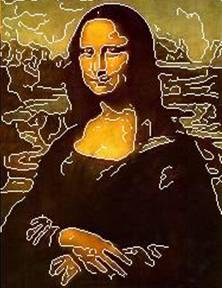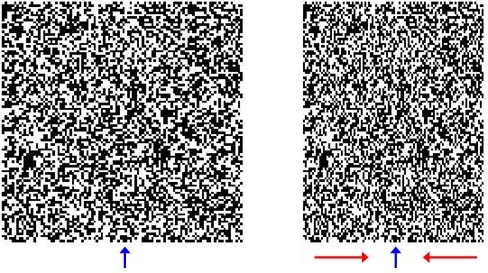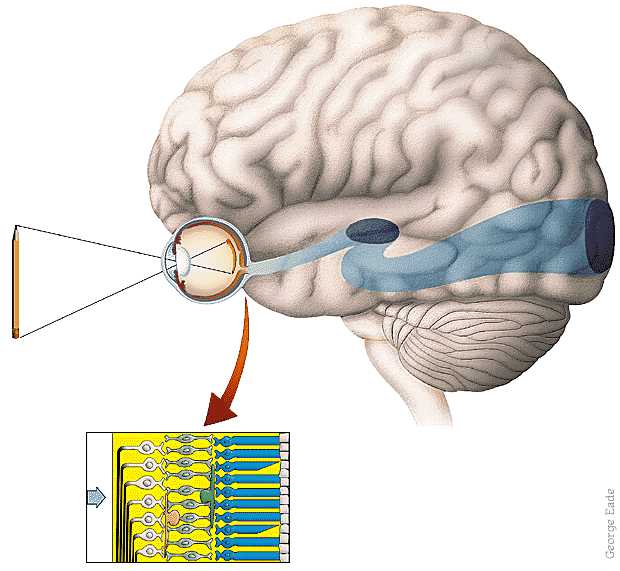
|
CS 332
Assignment 2 Due: Thursday, October 4 |
|
This assignment explores two methods for solving the stereo correspondence problem,
the multi-resolution algorithm proposed by Marr, Poggio, and Grimson, and a region based
algorithm that uses the sum of absolute differences as a measure of similarity between
regions of the left and right images. This assignment also includes a problem on the recovery
of depth from stereo disparity. The code files and images that you need are contained in the
stereo and edges folders in the /home/cs332/download/
directory on the CS file server. After downloading these folders, set the Current Folder
in MATLAB to the stereo folder and set the MATLAB search path to include the
edges folder.
Problem 1 (15 points): Recovering depth from disparity
Suppose we create a random-dot stereogram that has zero disparity everywhere (i.e. the left and right images are identical) and then condense the right image uniformly in the horizontal direction, as suggested by the red arrows in the figure below. Based on your understanding of the geometry of the projection of points in space onto the left and right eyes, what would you expect observers to see when viewing this stereogram? To support your explanation, construct a diagram of the stereo projection geometry in this case, analogous to the exercises that you completed in lecture. For simplicity, you can assume that the central column of the left and right images projects to the same position in the left and right eyes, so that it has zero disparity, as suggested by the two blue arrows in the figure.

Problem 2 (25 points): The Marr-Poggio-Grimson Multi-resolution Stereo Algorithm
In class, we discussed a simplified version of the MPG multi-resolution stereo algorithm
and performed a hand simulation of this algorithm on the board. This problem provides
another example for you to hand simulate on your own. The zero-crossing locations are shown
in the diagrams below. The top row shows zero-crossing segments obtained from a Laplacian-of-Gaussian
operator whose central positive diameter is w = 8, and the bottom two rows
show zero-crossing segments obtained from an operator with w = 4. Assume
that the matching tolerance m (the search range) is m = w/2. In
the diagram, the red lines represent zero-crossings obtained from the left image and the
blue lines are zero-crossings from the right image (assume that they are all zero-crossings
of the same sign). The axis below the zero-crossings indicates their horizontal position in
the image.
Part a: Match the large-scale zero-crossing segments. In your answer, indicate which left-right pairs of zero-crossings are matched and indicate their disparities.
Part b: Match the small-scale zero-crossings, ignoring the previous results from the large-scale matching. In your answer, indicate which left-right pairs of zero-crossings are matched and indicate their disparities. Show your analysis for this case on the bottom row of the figure.
Part c: Match the small-scale zero-crossings again. This time exploit the previous results from the large-scale matching. Show your analysis for this case on the middle row of the figure.
Part d: What are the final disparities computed by the algorithm, based on the matches from Part c? The final disparity is defined as the shift in position between the original location of the left zero-crossings and the location of their matching right zero-crossings.
Part e: One of the constraints that is used in all algorithms for solving the stereo correspondence problem is the continuity constraint. What is the continuity constraint, and how is it incorporated in the simple version of the MPG stereo algorithm that you hand-simulated in this problem?

Problem 3 (45 points): Exploring a Region-Based Stereo Algorithm
The compStereo.m code file contains a function that implements a simple region
based stereo corresondence algorithm, following the outline that we described in class. For each
location in the left image, stereo disparity is computed by finding a patch in the right image
at the same height and within a specified horizontal distance, which minimizes the sum of absolute
differences between the right image patch and a patch of the same size centered on the left image
location. The function
records both the best disparity at each location and the measure of the sum of absolute differences
that was obtained for this best disparity, and returns these values in two matrices (the function
actually converts the match score to an average difference before returning the results, to reduce
the magnitude of the values). There is a region around the perimeter of the image where no disparity
values are computed. Carefully examine the code and comments to understand how it works, and how
the various input parameters are defined.
The stereoScript.m file contains code to run an example of stereo processing
for a visual scene containing a variety of objects at different depths. The left and right images
are first convolved with a Laplacian-of-Gaussian operator to enhance the intensity changes in the
images, and the convolution results are then supplied as the input images for the compStereo
function. The parameter drange is the range of disparity to the left and right of the
corresponding image location in the right image that is considered by the algorithm. nsize
determines the neighborhood
size; each side of the square neighborhood is 2*nsize + 1 pixels. The parameter
border refers to the region around the edge of the image where no convolution values
are computed. Finally, the parameter nodisp is assigned a value that is outside the
range of valid disparities, and signals a location in the resulting disparity map where no disparity
was computed. Carefully examine the code in stereoScript.m to understand all the steps
of the simulation and display of the results.
Run the stereoScript.m code file and examine the
results. In the display of the
depth map, closer objects appear darker. Note that the value of nodisp is smaller
than the minimum disparity considered, so locations where no disparity is computed will appear
black. The results can be viewed with and without the superimposed zero-crossing contours.
Where do errors occur in the results, and why do they occur in these
regions of the image? You'll notice
some small errors near the top of the image, where the original image has very little contrast.
In areas such as this, the magnitude of the convolution values is very small and cannot be used
reliably to determine disparity.
Modify the compStereo function so that it does not bother
to compute disparity at locations of low contrast. A general strategy that can be used here
is to first measure the average
contrast within a square neighborhood centered on each location, and later compute disparity only
at locations whose measure of contrast is above a threshold. The size of the neighborhood used to
compute contrast can be the same as that used for matching patches between the two images. If the
input images are the results of convolution with a Laplacian-of-Gaussian operator, the contrast
can just be defined as the average magnitude of the convolution values within the neighborhood.
Once the contrast is measured at each location (this can be stored in a matrix), determine the
maximum contrast present in the image, and define a threshold that is a small fraction of that
maximum contrast (e.g. 5%). Finally, revise the code for computing
disparity so that it is only executed when the average contrast at a particular image location is
above this threshold. Run the stereo code again - what regions are omitted from the stereo
correspondence computation?
Examine how the results of stereo processing change as the size of
the neighborhood used to define the left and right patches is changed (e.g. the neighborhood size,
nsize, is increased to 25 pixels or decreased to 10 pixels). Explain why the results
change as they do. Also describe what happens when the size of the convolution operator is increased
(e.g. w = 8 pixels), and why.
For fun, modify the script to run the algorithm on the pair of stereo
images named chapelLeft.jpg and chapelRight.jpg in the stereo
folder, and report the mystery message that appears in the disparity map -
you can change the parameters for this example to drange = 6 and
nsize = 10. (For the original example, the image file names are left.jpg
and right.jpg and initial parameters are drange = 20 and
nsize = 20.) For this problem, submit your modified code
files and answers to all the questions here.
Problem 4 (15 points): Multi-resolution Region-Based Stereo Algorithm
Using the ideas that were embodied in the multi-resolution stereo algorithm developed by Marr, Poggio, and Grimson, describe how the region-based stereo algorithm explored in Problem 3 could be modified to use multiple spatial scales. You can either consider the ideas embodied in the original multi-resolution stereo algorithm proposed by Marr and Poggio to account for the use of multiple spatial scales and eye movements in human stereo processing, or the simplified version of the Marr-Poggio-Grimson multi-resolution algorithm that you hand-simulated in Problem 2. You do not need to implement anything here, just describe a possible strategy in words.
Submission details: Hand in a hardcopy of your answers to
these problems and your final compStereo.m and stereoScript.m code files.
Please also submit an electronic copy of your code files by logging into the cs file server,
connecting to your stereo folder and executing the following command:
submit cs332 assign2 *.*
